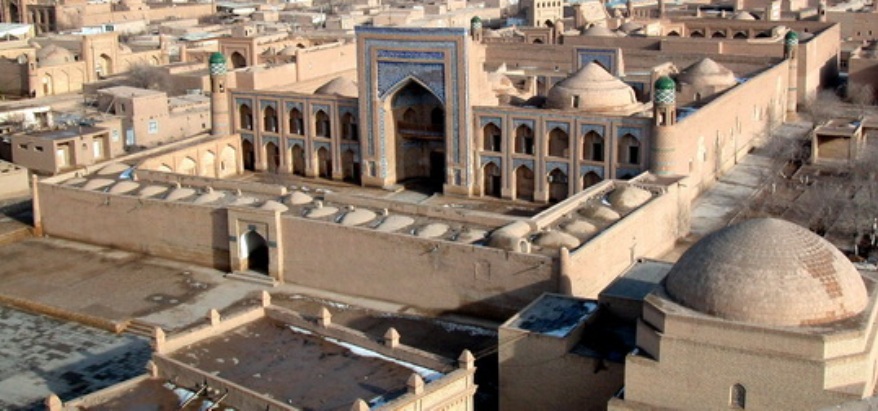Khorezm

Khorezm region is situated in northeast part of Uzbekistan. It occupies 6,300 km2. The climate here is continental, with a moderate cold winter and a hot dry summer. The region is inhabited by 1.2 million people, 80% of whom inhabit rural areas. The Khorezm region includes ten administrative districts with Urgench as its capital. Khiva abd Juma is another large town and tourist center.
Khiva is included in the United Nations Educational, Scientific and Cultural Organization's (UNESCO's) list of the cultural treasures to mankind. It is one of the ancient cities of Central Asia that has saved its unique architecture formed in the last two centuries. However, the real age of Khiva goes deep, breaking the time-borders of our epoch.
Khiva is like a fairy-tale town. The capital of the Khiva Khanate state in the 17th century, it has still retained the exotic flavor of a medieval town, which time has not destroyed.
There is a legend that says that Khiva was founded when Shem, the son of the biblical Noah, found wealth here. People started to call this place Khivak.
Khiva the pearl of the Khorezm oasis impresses one with its beauty. Khiva represents a complete immersion into the past, concentrated and compressed into a comparatively small space, enclosed by fortress walls. Here, you can almost hear the sounds of past centuries: the shouts of traders, the negotiations of buyers, the noise of crafters' workshops, the calls for evening prayer.
In modern Samarkand, amongst a wealth of historical monuments, visitors constantly “fall” from the past to the present; in Bukhara they cross the streets of history from century to century; but in Khiva they are transported to the past in a way that may seem permanent. They leave behind the massive walls of the Ichan-Kala, “a town within a town.”
The Ichan-Kala, surrounded by fortress walls, with four gates facing in all four directions, is the center of the city. Here you may walk through the narrow streets touching the roughness of the old walls, passing under arches of buildings into the cool shade of ancient trees.
People who are lucky enough to climb up the Akshi-Bobo bastion, which is used by guards to patrol and protect the city, can see all of Ichan-Kala.
About 20 madrassa high schools are preserved in Khiva. Madrassa Mukhammad Amin Khan is the biggest one. Really remarkable peculiarity is that it contains khudjars, special cells for students to live in.
The Juma-Mosque is very beautiful. The date of its construction is still is clearly written on the entrance: 1778 to 1782. The 210 columns supporting the roof are very old: from between the 12 and 15th centuries. These columns come from other ancient constructions. They are admired because of their intricate ornamentation.
There are many wonderful buildings outside the walls of the ancient town. The whole oasis of Khorezm is rich in memorials. Deep in the Karakum Desert, scientists found a large town, Kuzeli-Gyr, dating back 2500. A canal flowed towards the town and a deep moat surrounded the fortress. As the water disappeared, life in the town died and today only sand dunes and the grief of past centuries remains.
There are so many madrassas and mosques, big and small, located in the limited territory of the town that it is hard to believe, while walking through the labyrinth of the oldest past of the town, that a modern city churns with life just a few yards away.


